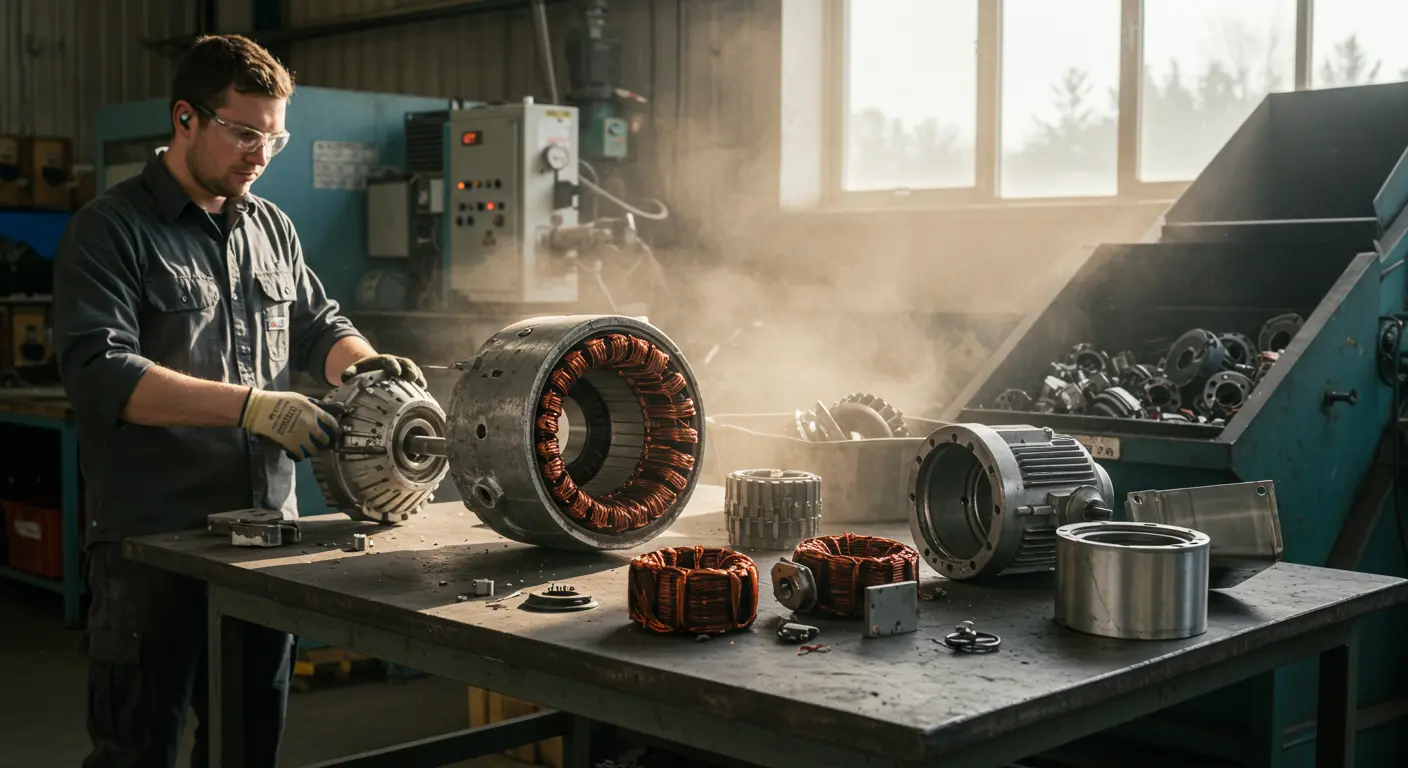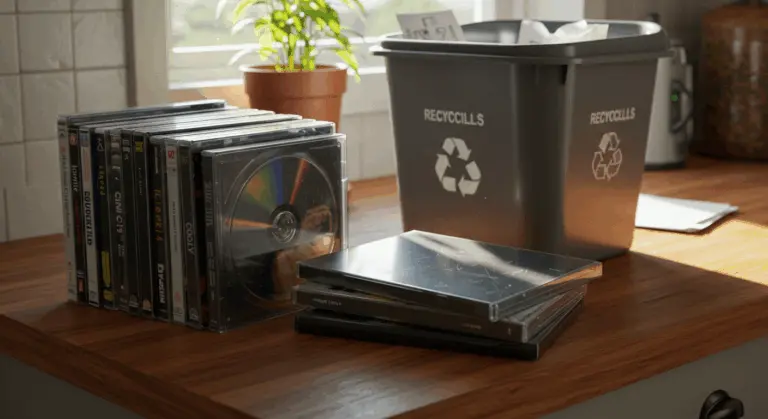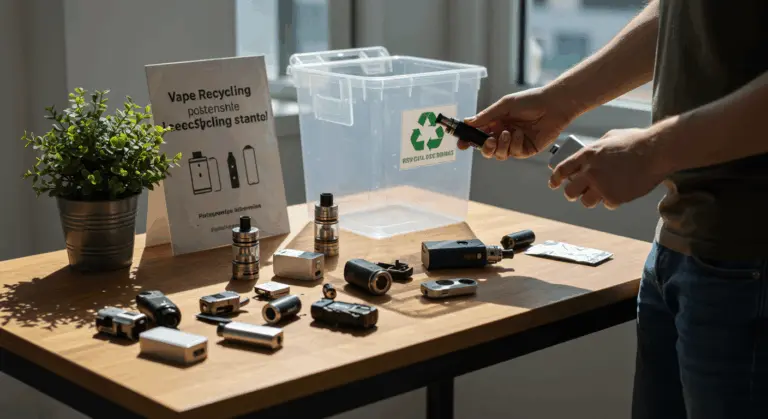Understanding Electric Motors – What They Are and Their Components
Electric motors transform electrical energy into mechanical power through an intricate relationship between electric current and magnetic fields. This electromagnetic interaction generates torque, spinning the motor’s shaft to drive everything from household appliances to industrial machinery.
Two distinct approaches create the magnetic field crucial for motor operation:
-
Electromagnets: Require an electrical current to generate magnetism.
-
Permanent magnets: Maintain their magnetic properties without external power.
This mechanical motion stems from the Lorentz force—a fundamental principle that acts on armature conductors as current flows through them within the magnetic field.
Electric motors have become central to our shift toward electric mobility. As automotive giants pivot from combustion engines to electrified powertrains, these motors drive the move to sustainable transportation. Their remarkable efficiency, proven reliability, and continuously improving performance make them indispensable across diverse applications—from sleek electric vehicles to robust industrial machinery and everyday household appliances.
Every electric motor houses several critical components, each packed with materials ripe for recycling:
-
Stator: The stationary part, containing steel laminations and copper windings.
-
Rotor: The rotating part, also containing steel laminations.
-
Commutator: Used in DC motors to switch current direction.
-
Bearings: Enable smooth rotation.
-
Shaft: Transmits the mechanical power.
-
Housing: Typically made of aluminum or steel.
The abundance of copper, steel, and aluminum within these components makes electric motors valuable sources for recycling.
Disassembly Techniques – How Motors Are Dismantled
Modern electric motor recycling facilities use advanced disassembly methods that maximize material recovery while prioritizing worker safety. The process usually begins with specialized hydraulic presses that crack open motor casings without damaging the valuable components inside. These precision machines apply calculated pressure to separate housings from internal elements, enabling clean extraction of different parts.
Advanced recycling operations use automated systems specifically engineered for motor disassembly. These systems efficiently split stators, extract copper windings, and separate aluminum components with minimal human intervention. Automation not only speeds up processing but also improves safety by reducing direct handling of potentially sharp or heavy components. Specialized cutting tools then precisely separate different metal types, ensuring maximum purity of recovered materials.
While manual disassembly methods persist, they’re considerably less efficient and pose elevated safety risks. Professional recycling facilities invest heavily in equipment that improves efficiency, minimizes labor requirements, and reduces potential injuries from motor handling. This technological approach ensures optimal material recovery rates—particularly crucial for high-value components like copper windings, which can constitute up to 20% of a motor’s weight.
Collection and Preparation – Getting Ready for Recycling
Proper preparation of electric motors before recycling is essential for both safety and optimal material recovery. Critical preparation steps include:
-
Drain all fluids: Completely drain oils and lubricants, collecting them for separate, proper disposal as hazardous waste.
-
Remove hazardous components: Carefully detach any batteries or capacitors, as they require specialized recycling.
-
Ensure electrical safety: Verify the motor is completely disconnected from any power source.
-
Clean the exterior: Remove dirt and grime to help recyclers identify components more easily.
-
Transport securely: Secure motors during transit to prevent damage or leaks.
-
Provide documentation: If possible, document the motor’s type, age, and condition to improve recycling efficiency and potentially increase compensation.
Benefits of Recycling Electric Motors – Environmental and Economic Impact
Recycling electric motors provides significant environmental and economic benefits beyond waste reduction. From a resource conservation standpoint, these devices harbor valuable metals like copper, aluminum, and steel that can be recovered and reintegrated into manufacturing supply chains. This recovery process significantly reduces our reliance on extracting virgin materials through mining operations—activities that are notoriously energy-intensive and environmentally disruptive.
The energy savings achieved through electric motor recycling are impressive. Reprocessing recycled metals demands considerably less energy than refining raw materials from ore. Consider this: recycling copper—a primary component in motor windings—consumes up to 85% less energy than mining and processing new copper. This energy efficiency translates directly into reduced carbon emissions and a much smaller environmental footprint for the electrical manufacturing industry.
Environmental protection benefits are also significant. When electric motors languish in landfills, they can leach harmful chemicals and substances that contaminate soil and groundwater systems. Proper recycling prevents these contaminants from infiltrating ecosystems while simultaneously reducing air and water pollution associated with both landfill disposal and new material extraction.
From an economic perspective, the electric motor recycling industry generates valuable employment opportunities throughout the entire recycling value chain. Jobs are created at collection centers, dismantling facilities, material processing plants, and within transportation networks connecting these operations. These positions span from entry-level roles to specialized technical positions requiring expertise in material identification and advanced processing techniques.
Electric motor recycling also supports the circular economy—a system that aims to eliminate waste and continuously reuse resources. By recovering materials from end-of-life motors and channeling them back into production cycles, recycling sustains the electrical supply chain with a steady stream of reclaimed components.
Finding the Right Recycling Center – Where to Recycle Electric Motors
Multiple pathways exist for recycling electric motors, with the best choice depending on quantity and motor type:
-
Specialist Recycling Facilities: These centers have the dedicated equipment and expertise to handle large quantities of motors, efficiently separate materials, and manage hazardous substances. They provide the most comprehensive and professional solution.
-
Municipal Waste Collection Sites: Many local recycling centers now accept electrical waste, including motors. This is convenient for homeowners or small businesses disposing of just a few items—though it’s wise to verify acceptance policies with your local authority first.
-
Scrap Metal Recyclers: These businesses purchase motors for their metal content, offering financial returns based on current market rates for copper, aluminum, and steel. It’s worth contacting multiple recyclers to compare current pricing.
When selecting a recycling facility, prioritize those with proper environmental certifications and transparent processing methods. Responsible recyclers provide comprehensive documentation demonstrating compliance with environmental regulations and adherence to best practices for material recovery. This ensures the motors you recycle actually benefit the circular economy rather than creating additional environmental problems through improper handling or disposal.
Retailer Take-Back Programs – A Convenient Option for Recycling
For consumers seeking hassle-free electric motor recycling options, retailer take-back programs provide a convenient option. Many major electronics and appliance retailers now provide dedicated collection points featuring specialized bins designed specifically for electrical waste, including motors from household appliances and power tools. This service enables customers to conveniently drop off old electric motors while purchasing new equipment or during routine shopping trips.
These take-back initiatives have grown significantly as retailers embrace sustainability commitments and respond to extended producer responsibility regulations. Large home improvement stores, electronics chains, and even select supermarkets now participate in these programs, making responsible disposal more convenient than ever. Collection points are typically positioned near store entrances or customer service areas for maximum accessibility.
To locate local retailer recycling options, consumers can use online resources. Websites like Material Focus’ ‘Recycle Your Electrical’ offer searchable databases where you can enter your postcode to discover the nearest participating retailers and drop-off points. Regional programs such as the London Recycles scheme also provide comprehensive information about retailer take-back services in specific metropolitan areas.
The convenience factor makes these programs particularly valuable for individuals disposing of smaller motors from household appliances like fans, blenders, or power tools. While municipal recycling centers and scrapyards might require dedicated trips, retailer take-back programs easily combine responsible recycling into regular shopping routines. This integration makes sustainable disposal practices far more likely to become ingrained habits.
Market Trends and Future of Electric Motor Recycling
The electric motor recycling industry is growing quickly to meet increasing demand, with market projections reaching USD 169 billion by 2026. This growth, fueled by the automotive, industrial, and consumer electronics sectors, makes recycling solutions essential.
Despite this remarkable growth, current recycling practices face major challenges. The recovery rate for high-value materials like rare earth elements—critical components in high-efficiency motors—remains below 3%. This low rate represents a massive economic loss and increases our dependency on mining increasingly scarce resources.
Several trends are changing the electric motor recycling landscape. Automated disassembly technologies are becoming more common, with robotics and AI-powered systems processing motors far more efficiently than traditional manual methods. These technologies can identify different motor types and adjust their disassembly approach, significantly improving recovery rates.
Policy developments are also affecting the sector’s evolution. Extended Producer Responsibility (EPR) regulations are expanding globally, placing greater responsibility on manufacturers to consider end-of-life management during product design phases. This regulatory pressure is driving innovation in Design for Disassembly (Did) approaches, where motors are engineered from conception to facilitate easier recycling.
The circular economy concept could transform motor lifecycles, shifting from the traditional linear ‘produce-use-dispose’ model to one designed for continuous reuse. Key innovations supporting this transformation include:




